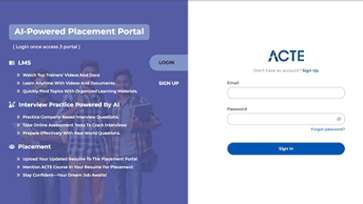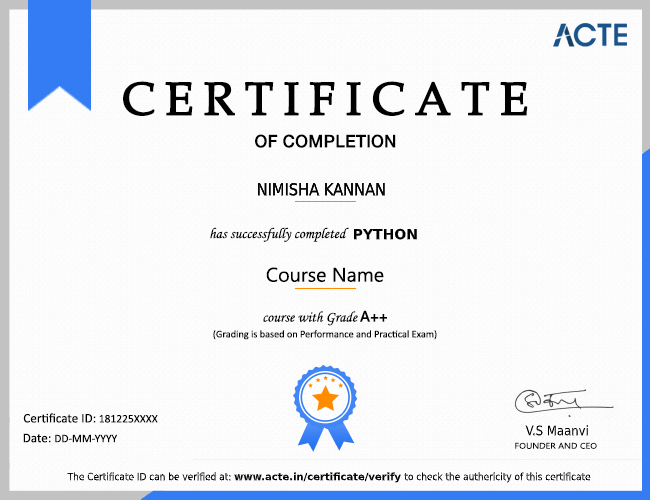RPA is used to automate manually performed workflow tasks that are rule-based, repeatable, time-consuming and of high volume in nature. RPA is the automation of human interactions with computerized processes hence reducing the time taken to complete the processes, increasing productivity and reducing the costs. Due to these features, RPA finds its applications in a wide variety of industries.Start Learning with us ACTE Robotic Process Automation (RPA) Classroom & Online Training Course.
The growth of the industry and widespread adoption of RPA will drive job growth as well. Many types of jobs are available in RPA, including developer, project manager, business analyst, solution architect, and consultant. This is fact, going to be the future and most important thing in the coming years. RPA in the future is going to incorporate the following things: Incorporating AI for advanced decision-making and inferencing.
Meanwhile, there are so many good opportunities are been involved in the future scope of RPA can be observed in the field of data entry and data rekeying jobs. These tasks could easily automated with RPA. The various repetitive tasks such as formatting, data assembling or anything, which requires a series of steps, that can easily carried out with the help of RPA. RPA will definitely become the next revolution in technology and you will surely find thousands of jobs opening every year. There are more than 5 million jobs awaiting you, right now.
However, robotic process automation (RPA) anticipated evolving and soaring over the forecast period. The modern enterprises need robotic process automation for faster implementation, execution, and scaling. Technological advancements have triggered businesses to overcome new challenges aimed to cope with changing consumer demand and requirements. In the recent past, the adoption of robotic process automation has captured the attention of many SMEs and large enterprises. This can be able to attribute to RPA’s ability to deliver seamless operation coupled with significant value addition from the resources.
We are happy and proud to say that we have strong relationship with over 700+ small, mid-sized and MNCs. Many of these companies have openings in Robotics. Moreover, we have a very active placement cell that provides 100% placement assistance to our students. The cell also contributes by training students in mock interviews and discussions even after the course completion.
Absolutely it’s an future field where, According to Forrester Research (Nov 2015), up to 9% of the global workforce will be threatened by RPA software in the near future. The change is coming, and it is up to process improvement professionals to prepare for this disruption by properly educating their corporations on the do’s and don’ts of RPA. Robotic process automation (RPA) been heralded as the next big thing in process management. Google Trends reports show that the last 2 years have seen a peak in interest in these technologies.
The Difference between Robotic Process Automation and Artificial Intelligence. RPA is a software robot that mimics human actions, whereas AI is the simulation of human intelligence by machines. RPA is a technology that uses specific set of rules and algorithm and based on automated a task. Mean While AI is focused more on doing a human-level task, RPA is practically a software that reduces human efforts — it is about saving the business and white-collar workers' time.
Robotics Process Automation (RPA) allows organizations to automate task just as a human being was doing them across application and systems. ... RPA does not require the development of code, nor does it require direct access to the code or database of the applications. Initially, coding skills are not required. However, if you want to learn more of RPA, at least one programming language would be required to extend the existing RPA functionality. There are no prerequisites for Automation Anywhere. No coding is required..... Automation Anywhere empowers organizations to automate the processes that has been executed by the humans.
Our courseware is designed to give a hands-on approach to the students in Robotics Automation. The course is made up of theoretical classes that teach the basics of each module followed by high-intensity practical sessions reflecting the current challenges and needs of the industry that will demand the students’ time and commitment.
In 2020, RPA is going to claim its place as a central platform for other enterprise automation tools. RPA has been around for the last few years and has advanced considerably. It can manage any types of tasks that are repetitive and predictable. It frees up the resources to focus on tasks that require creativity, decision-making and judgement. As per Forrester, RPA Market will reach $2.9B by 2021.
The future certainly belongs to RPA, and workforces around the world are investing heavily in this efficient technology to fast-track organizational efficiency, effectiveness and profitability. Nonetheless, global robotic process automation has come a long way since 2016. At the time, RPA software purchases amounted to $73 million. This increased to $113 million in 2017, $153 million in 2018, and $192 million in 2019. In 2020, HFS Research estimates that this figure will rise to $232 million and by 2021 to $272 million. These projections indicate that there is strong growth in RPA adoption in the global market. RPA services have increased rapidly since 2016, rising from $198 million, to $630 million in 2019. By 2021, that figure is expected to rise to $952 million. Experts roundly agree that RPA is the future of IT automation
The growth of the industry and widespread adoption of RPA will drive job growth as well. Many types of jobs are available in RPA, including developer, project manager, business analyst, solution architect, and consultant. People are often concerned about robotic process automation taking jobs away from real people. But a lot of companies who need manual data entry already aren’t hiring local employees for those tasks. They’re outsourcing their data entry overseas. Since the bots would be managed/hosted here in the USA, using RPA actually repatriates jobs.
Why Should You Learn RPA?
RPA is not “Rip and Replace”
There are a lot of talks these days about the bleak future of employment as there are claims that robots will steal all the jobs but in reality, automation will spur the growth of many new jobs including some entirely new job categories also.
One of the biggest advantages of using a virtual workforce or an RPA bot is that it does not require you to replace your existing systems, which means that both sit on top and alongside your existing infrastructures. So to do your work, you’ll need some additional software and virtual machines to deploy fully independent digital workers or normal sports but you won’t need to rip and replace your existing infrastructures. Therefore RPA does not pull down your existing systems but it leverages them.
Software Migration
It’s a fact that software migrations are time-consuming and costly. Migrating to a new ERP or any AMA could take years and cost tens or hundreds of millions of dollars. What’s even more frustrating is that at times certain features and functionalities which may have functioned in a particular way in the previous software versions may not be even present in the updated versions.
For Example: Suppose a business process where employees lock wait time is total HR Software A. Now if the software is updated to HR Software B. This advanced comprehensive software may not track the paid time.
Then, in that case, the company must maintain a small slice of Software A and manually pass the data into Software B. In such kind of organizational based issues, robotic process automation helps with its accuracy, speed and continuous updating of the software.
Easy To Scale and Implement
RPA system is very easy to use and implement because it focuses on providing help to end-users to navigate. It also makes the employees realize which work is to be done more conveniently and quickly.
Suppose if a workflow isn’t working properly, you can make changes instantly and see how effectively these changes impact your end result.
Delivers Security
A security breach of data is an unfortunate instance as businesses almost get ruined since the data is stored in a central repository and if you are using RPA, it ensures that the setting of accessibility is done by the employee. That means only the right people will have access to the data that pertains directly to their workflow. Anything else that they’re not supposed to see will remain encrypted and safe from prying eyes.
No Down Time
Software bots can work all the time – 24-hours a day for the complete year, at 100% capacity. If your process changes and the bots need to learn something new, you can either replace them with new bots or alter their programming. The designed bots are not prone to errors and can do the assigned work in quite a quick manner.
Popularity and High Salary
According to Indeed.com, the average salary for an RPA developer ranges around $100,275 per year. Not only at an individual level but many hyper-growth companies like Dell or Accenture, IBM, Cognizant, Capgemini use robotic process automation in the companies to enhance the growth in the scaling industry.
Saves Time and Money
A process which saves both time and money is the most essential criteria for any business to get successful. It is very important to find the right balance between time and revenue to ensure a profitable business. The top RPA tools present in the market today are offering free editions to let the customers learn how to automate tasks.
Complex Problems Are Solved
As our data sources and analytic capabilities have grown, so has the time required to build various reports increased. The Robotic Process Automation system is the ideal solution to solve these types of problems. The system stores the information and it can also remember and transform this information very easily, that means this makes you auditable and tax ready. So, you can design an automation workflow to create a report by retrieving data from various sources at a scheduled time everyday.
RPA is helpful in several areas
As it turns out, RPA can be implemented in a diverse number of industries (e.g. banking, retail, insurance), freeing up employees to tackle more rewarding tasks, things that could increase their own visibility in the company and consequently result in increased benefits and other rewards. Robotic Process Automation can be used to tackle jobs such as:
- Order processing
- Shipment scheduling and tracking
- Customer due diligence tasks
- Vendor, customer, and employee onboarding
- Data extraction from PDFs and other documents
- Generating mass e-mails
- Generating and delivering invoices
- Updating user information
- Employment history verification
- Payroll automation
- Updating inventory records
- Issuing refunds






























